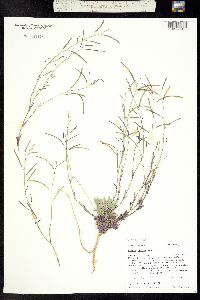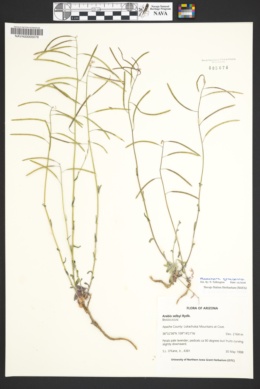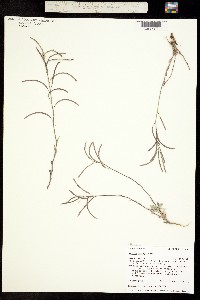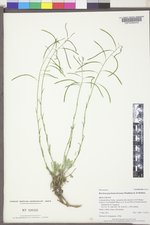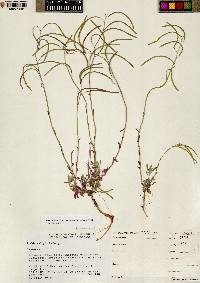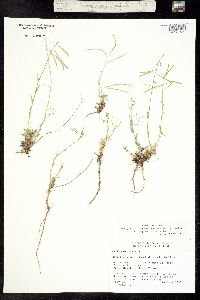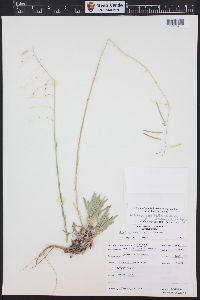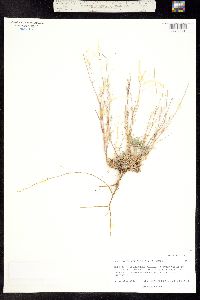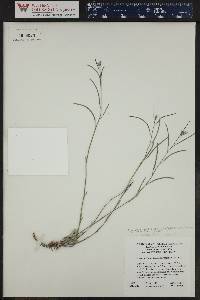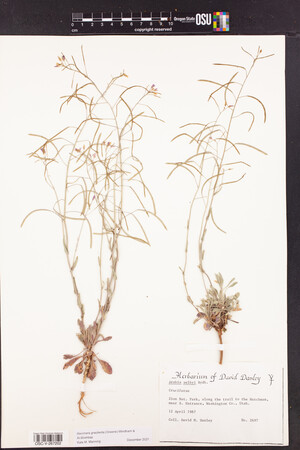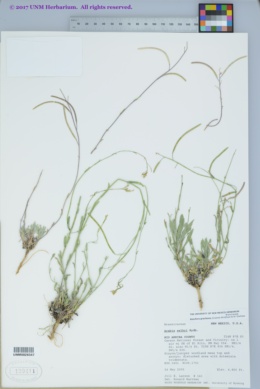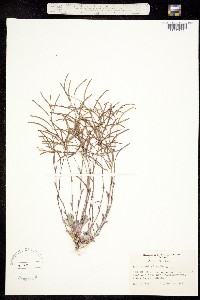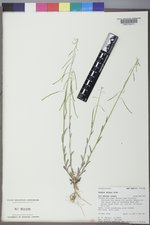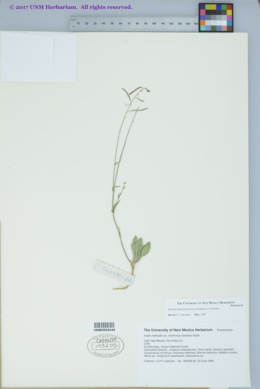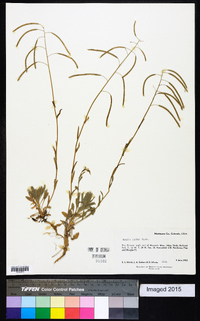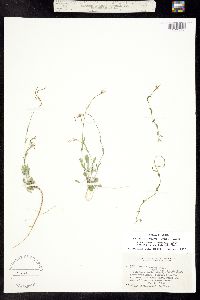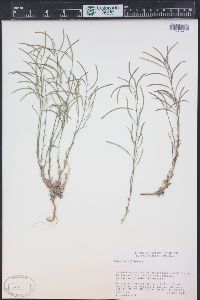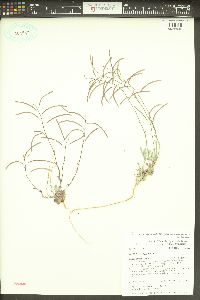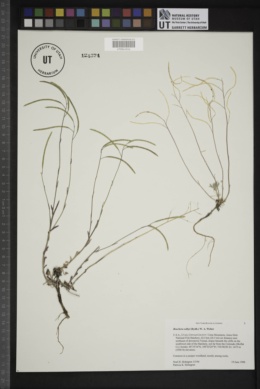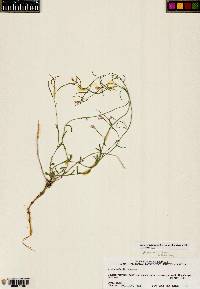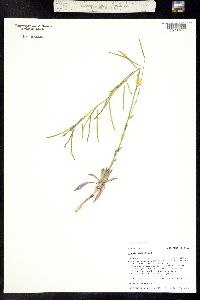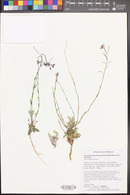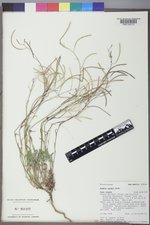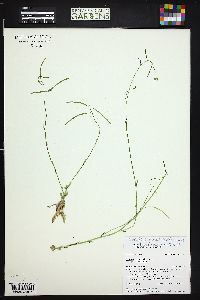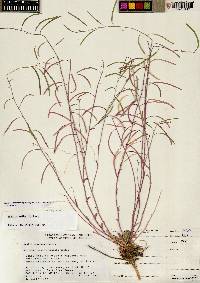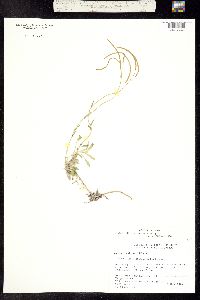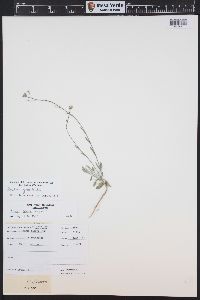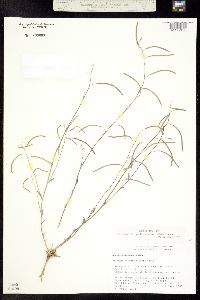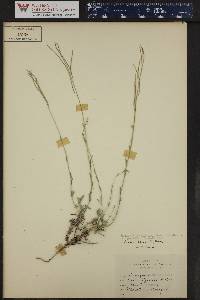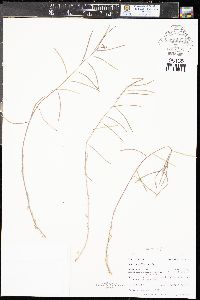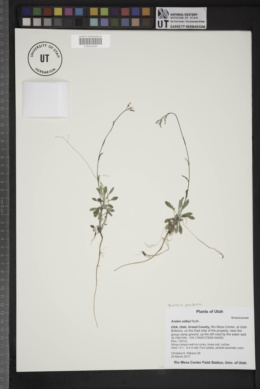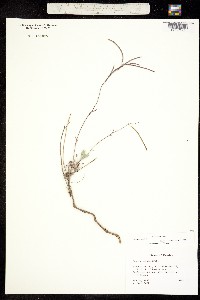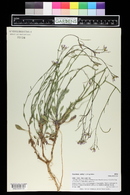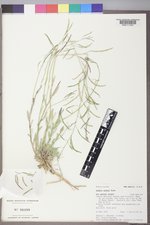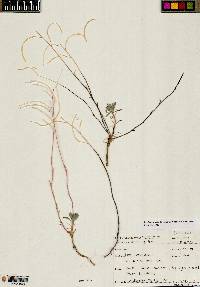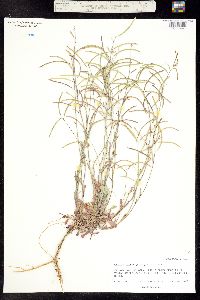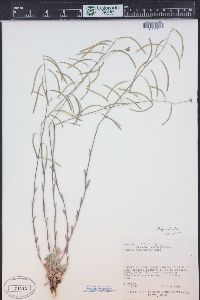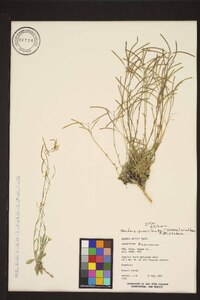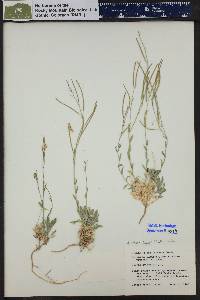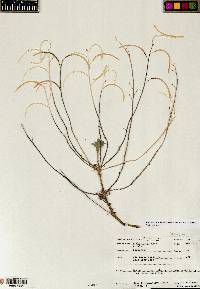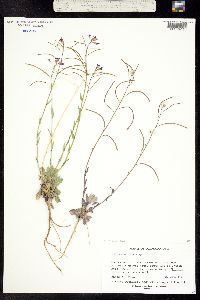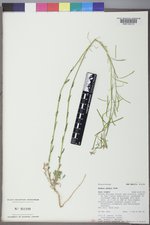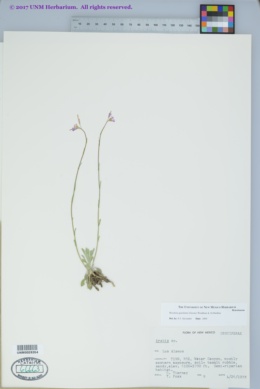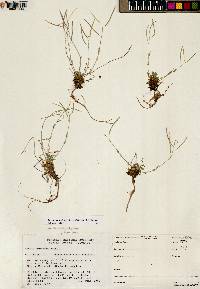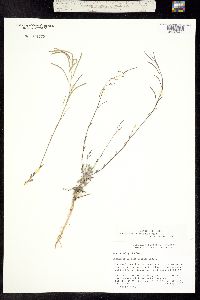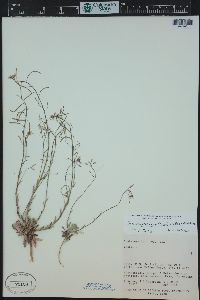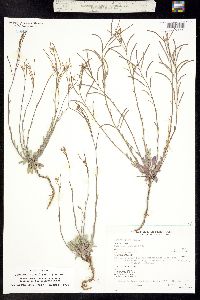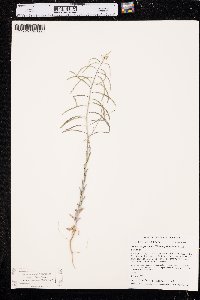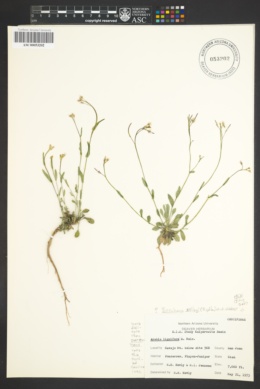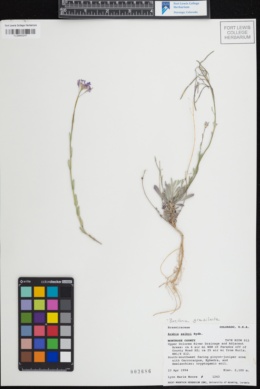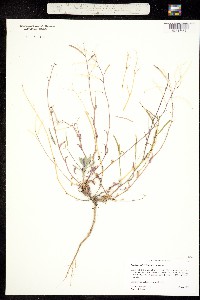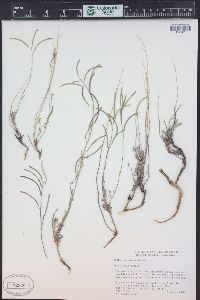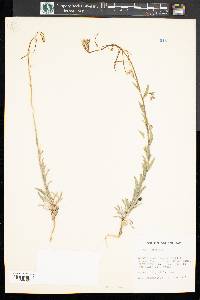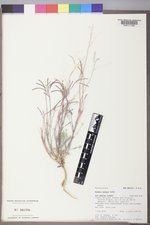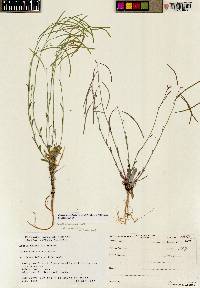Boechera gracilenta
|
|
|
|
Family: Brassicaceae
Selby's Rockcress
[Arabis perennans var. thorneae S.L. Welsh, moreArabis selbyi Rydb., Boechera selbyi (Rydb.) W.A.Weber] |
Perennials; short- or (rarely) long-lived; apomictic; caudex usually not woody. Stems 1-9 per caudex branch, arising from center or margin of rosette near ground surface, (1.5-)2.5-5.5 dm, densely pubescent proximally, trichomes short-stalked, 2-4-rayed, 0.1-0.5 mm, mixed with some simple ones, to 0.8 mm, glabrous distally. Basal leaves: blade oblanceolate, 2-9 mm wide, margins shallowly dentate or sometimes entire, ciliate proximally, trichomes (simple and spurred), to 1.2 mm, surfaces moderately to densely pubescent, trichomes short-stalked, 4-6(-8)-rayed, 0.1-0.5 mm. Cauline leaves: 4-9, not concealing stem; blade auricles 1-3 mm, surfaces of distalmost leaves usually glabrous. Racemes 7-20-flowered, usually unbranched. Fruiting pedicels divaricate-ascending, gently curved downward, (7-)10-18 mm, glabrous. Flowers ascending at anthesis; sepals pubescent; petals lavender, 6-7 × 1.5-2 mm, glabrous; pollen spheroid. Fruits usually widely pendent, rarely horizontal, not appressed to rachis, not secund, slightly curved, edges parallel, (3-)4.5-7 cm × 1.7-2 mm; valves glabrous; ovules 60-96 per ovary; style 0.1-0.3 mm. Seeds sub-biseriate, 1.2-1.8 × 0.9-1.2 mm; wing continuous, 0.1-0.25 mm wide. Flowering Apr-May. Rocky slopes and sandy soil in pinyon-juniper woodlands and mountain shrub communities; 1900-2300 m; Ariz., Colo., N.Mex., Utah. Morphological evidence suggests that Boechera gracilenta is an apomictic species that arose through hybridization between B. fendleri and B. pallidifolia; it is superficially similar to the sexual diploid B. perennans but is not closely related (see M. D. Windham and I. A. Al-Shehbaz 2007b for detailed comparison).
FNA 2010, Allred and Ivey 2012 Duration: Perennial Nativity: Native Lifeform: Forb/Herb General: Short-lived perennial herbs (rarely long-lived), 15-55 cm tall, from a branched, non-woody caudex; stems 1-9 per caudex branch, arising from the center or (more often) the side of a rosette of leaves near the ground surface; lower portions of stems densely pubescent, with short-stalked, 2-4-rayed stellate hairs mixed with some simple hairs; upper parts of stems are hairless. Leaves: Basal leaves petiolate, clustered in distinct rosettes; stem leaves alternate, sessile; basal blades oblanceolate, 2-9 mm wide, the margins shallowly dentate or sometimes entire, surfaces moderately to densely pubescent with short-stalked, 4-6-rayed stellate hairs; stem leaves few, the bases clasping the stem with auricles 1-3 mm; uppermost stem leaves usually glabrous. Flowers: Lavender, in terminal racemes of 7-20-flowers, on 1-2 cm pedicels that are ascending in flower and when in fruit are divergent-ascending and gently curving downward; sepals 4, pubescent; petals 4 in a cross formation, lavender, 6-7 mm long. Fruits: Capsules linear, 3-7 cm long and 2 mm wide, usually curved, widely pendant or rarely horizontal, glabrous; seeds 1-2 mm long and 1 mm wide, winged, usually in about 2 rows per locule. Ecology: Found on rocky slopes and sandy soil in pinyon-juniper woodlands and mountain shrub communities, from 6,000-7,500 ft (1829-2286 m); flowers April-May. Distribution: AZ, CO, NM, UT Ethnobotany: Unknown Etymology: Boechera is named after Tyge Wittrock Boecher (1909-1983), born in Copenhagen, an authority on Arctic vegetation and the flora of Greenland who also worked in Argentina; gracilenta comes from the Latin word for graceful. Editor: AHazelton 2017 |



